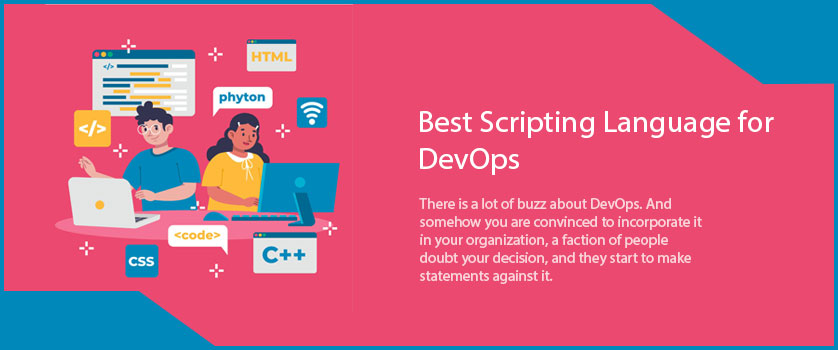


There is a lot of buzz about DevOps. And somehow you are convinced to incorporate it in your organization, a faction of people doubt your decision, and they start to make statements against it. They tell you that DevOps is all about putting the existing technology down and learning a new one.
Well, if you’re one of them who also thinks the same, then this is the time to change your thoughts. DevOps is just a process that eases your development tasks so that you can build better products faster.
However, if you’re worried that you have to learn a new language, then this post is for you.
In this article, we will reveal the best scripting languages that are currently used by the DevOps teams worldwide, and how you can select the best one for you.
Python is amongst the top scripting languages used for high-level programming. First released in the year 1991 by Guido van Rossum, it has now become the first choice for beginners and professionals. The main uses of the Python language are web development, data science, creating software prototypes, and various other things. But the best part is that it supports Cross-platform.
Features:
Go scripting language belongs to Google. This scripting language was released in 2009. The creators of this language are Robert Griesemer, Rob Pike, and Ken Thompson. It is an open-source language and supports Linux, macOS, FreeBSD, NetBSD, OpenBSD, Windows, DragonFly BSD, and Solaris operating systems.
Features:
Ruby is the best programming and scripting language. It was written by Yukihiro Matsumoto in the year 1995. It supports cross platforms and is available under GPL (General Public License) and BSD (Berkeley Software Distribution) license. It supports multiple programming patterns, including functional, object-oriented, and imperative.
Features:
Groovy can be used as a scripting language and it is preferred by DevOps professionals. It was designed by James Strachan and developed by Guillaume Laforge, Jochen Theodorou, Paul King, and Cedric Champeau. First, it was first released in the year 2003 under Apache license. It supports the Java platform.
Features:
PERL (Practical Extraction and Reporting Language) is a high-level, interpreted, dynamic programming and scripting language written by Larry Wall. It was first released in 1987. The main aim of this language was to do text editing. However, these days it is broadly used for various purposes that include system administration, network programming, web development, etc. Perl is quite popular for extracting data and generating reports.
Features:
It is extremely portable and easy to learn.
It provides cross-platform support.
It is free and open Source
It can embed in web servers and database servers.
It makes system administration tasks easy.
Microsoft PowerShell or Windows PowerShell belongs to Microsoft. It is an open-source automation framework and scripting language. It provides a command-line shell and scripting language, which is integrated with the .Net framework that can be embedded with other applications as well. If you have application infrastructure with Windows then PowerShell is a must for you.
Features:
JavaScript is a widely popular programming and client-side scripting language. It was developed as LiveScript by “Netscape” in the 1990s and renamed to JavaScript in the year 1995, and became an ECMA (European Computer Manufacturers Association) standard in 1997. It is an object-oriented language that has some commonalities in syntax to Java programming language. However, it’s not associated with Java in either way. JavaScipt adds and enhances interactivity and dynamic consequences to the web pages by managing the content returned from a web server. If you are good at it then you can develop games, animated 2D and 3D graphics, comprehensive database-driven apps, and much more.
Features:
DevOps is gaining popularity with each passing day. Hence it’s the best time for adding a new skill to your basket. The same can be said for scripting languages. If you have any doubt that you have to learn a new scripting language to start your DevOps journey, then worry not. You don’t have to learn each language mentioned in this article. You can start with Python, which is a comprehensive and easy-to-learn language.
However, it is also good to inculcate a habit of learning new things as you move ahead along the process of learning.